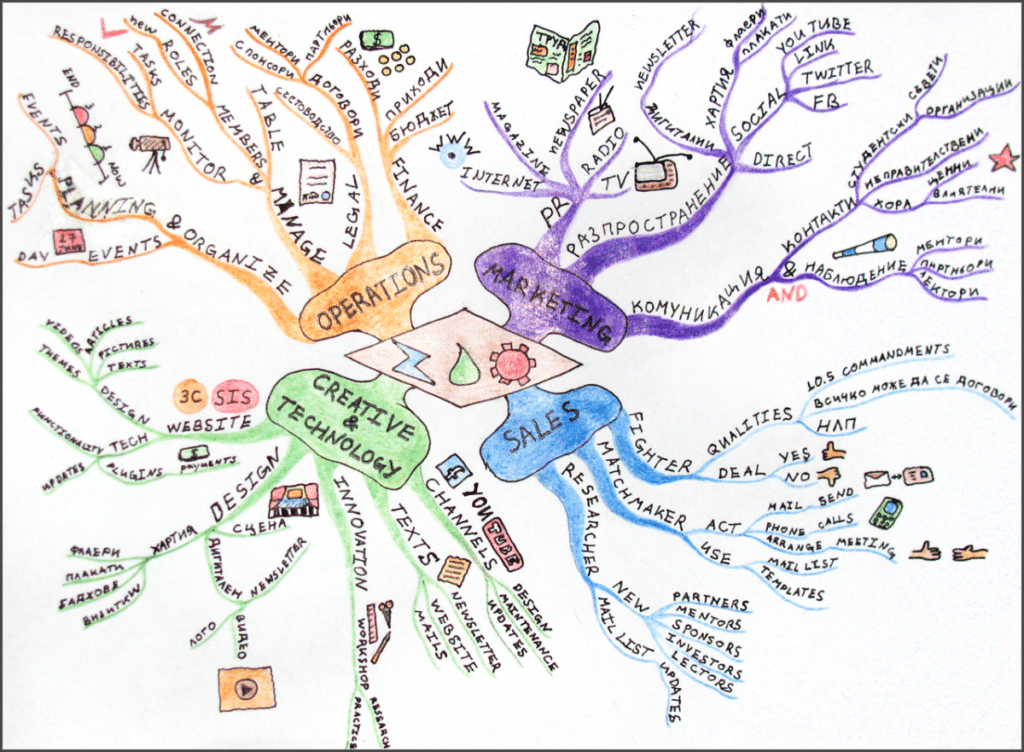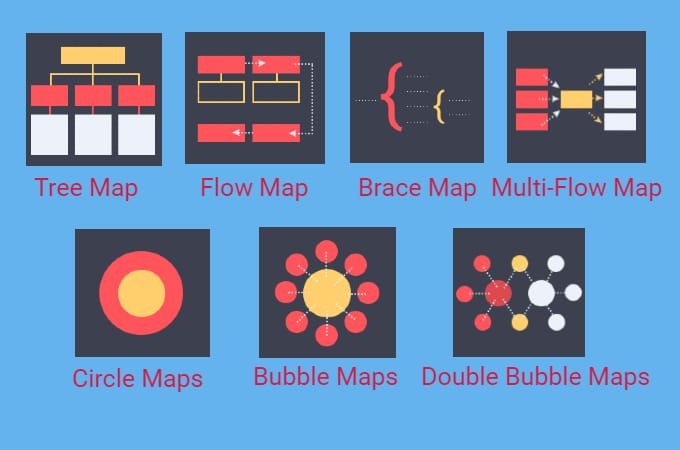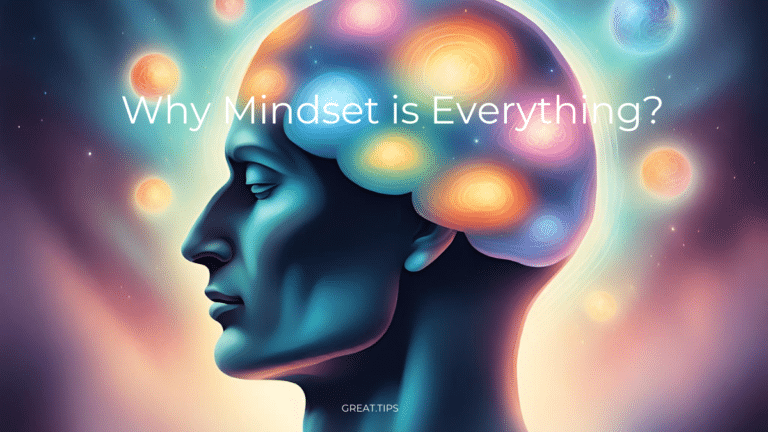What is a Mind Map?
Key Takeaways
- Mind maps center around a single concept, branching out into related subtopics.
- There are various types of mind maps such as flow, tree, bubble, brace, and circle.
- Mind maps enhance creativity, memory retention, and understanding and learning of complex topics.
- Mind mapping is versatile, useful for various applications from education to business planning.
A mind map is a visual tool that enables the structuring of thoughts and ideas around a central theme. At its core, it involves a central idea from which various branches emanate, representing different aspects or subtopics related to that idea. This central image serves as a focal point to which associations and connections are made through words, phrases, or images.
The non-linear nature of mind maps facilitates a flexible approach to organizing and prioritizing information, making it an engaging method for brainstorming, note-taking, and problem-solving.

The use of mind maps has grown in popularity across many fields due to their utility in enhancing memory retention, creativity, and understanding complex structures. They provide a bird’s-eye view of a topic, allowing users to see interconnections that might not be as apparent in linear notes.
Definition and Purpose of Mind Maps
Mind mapping can be done manually with pen and paper or digitally through various software applications, each offering a unique set of tools to personalize the mind mapping experience. Whether for academic purposes, business strategy development, or personal project planning, mind mapping offers a dynamic way to capture and organize thoughts.
Core Concept
A mind map is a diagram that displays information around a central idea, typically with branches representing different aspects or subtopics connecting back to the core. This visual representation of thoughts or concepts is structured in a radial way, mirroring the way brains naturally process information.
Key Benefits
The key benefits of mind mapping include enhancing creativity, improving memory, and organizing thoughts. By visually structuring ideas, mind maps aid in clearer thinking and more structured decision making. They are also versatile, commonly used in various scenarios like planning, problem-solving, and consolidating information from different sources.
Direction for Creating a Mind Map
Creating an effective mind map involves gathering necessary materials and following a structured step-by-step process. This visual tool facilitates idea generation and organization.
Materials Needed
To begin a mind map, one requires:
- Writing Tools: Pencils, pens, or markers in various colors.
- Paper or Digital Canvas: Large paper or a digital platforms (many options are available and several vendors have free trials, see section on Mind Mapping Software below).
- Optional Accessories: Rulers, erasers, or stickers for additional organization.
Step-by-Step Process
Identify the Central Idea:
- Write the main concept in the center of the canvas, often encapsulated in a circle.
Create Main Branches:
- Draw branches radiating out from the central idea. Label these with key subtopics.
Add Sub-Branches:
- For further details, add smaller branches to the main ones, elaborating on each subtopic.
Use Color and Images:
- Differentiate branches and ideas with colors and include images if desired, enhancing memory retention and visual appeal.
Connect Ideas:
- Draw connections between related ideas across different branches to show relationships.
Refine and Review:
- Revisit each branch, adding or removing content as needed for clarity and completeness.
Mind Mapping Software Options
Mind mapping software is a great tool to facilitate the process we have discussed. There are many different options available, each with its own strengths and weaknesses. Here is a comparison of some of the most popular mind mapping software:
1. Coggle
Pros:
- Free for basic use
- Simple and easy to use
- Real-time collaboration
- Integrates with other tools like Google Drive and Slack
Cons:
- Limited features in the free version
- Not as powerful as some other options
2. MindMeister
Pros:
- Freemium model with a generous free plan
- Web-based, so you can access it from any device
- Large library of templates and clip art
- Powerful collaboration features
Cons:
- Some features are only available in the paid plans
- Can be slow at times
3. XMind
Pros:
- Open-source and free
- Powerful and versatile
- Large community of users and developers
- Available for multiple platforms
Cons:
- Can be a bit overwhelming for new users
- Not as user-friendly as some other options
4. MindManager
Pros:
- The most powerful and feature-rich mind mapping software
- Great for business users
- Integrates with Microsoft Office
Cons:
- Expensive
- Not as easy to use as some other options
5. Miro
Pros:
- Online whiteboard with mind mapping features
- Great for team collaboration
- Integrates with many other tools
Cons:
- Can be expensive for individual users
- Not as focused on mind mapping as some other options
Here is a table summarizing the features of each software:
| Feature | Coggle | MindMeister | XMind | MindManager | Miro |
|---|---|---|---|---|---|
| Price | Free | Freemium | Free | Paid | Freemium |
| Platform | Web, iOS, Android | Web, iOS, Android, Windows, Mac | Web, iOS, Android, Windows, Mac | Windows, Mac | Web |
| Collaboration | Real-time | Real-time | Real-time | Real-time | Real-time |
| Features | Basic | Freemium | Open-source | Powerful | Online whiteboard |
| Best for | Beginners | Collaboration | Professionals | Business users | Teams |
The best mind mapping software for you will depend on your individual needs and budget. If you are just starting out, Coggle or MindMeister are great options. If you need more features, XMind or MindManager are good choices. And if you are working with a team, Miro is a great option.
Here are some tips for choosing the right mind mapping software:
- Consider your needs. What do you want to use the software for?
- Set a budget. How much are you willing to spend?
- Try out a few different options. Most of these softwares offer free trials.
- Read reviews. See what other people are saying about the software.
Applications of Mind Maps

Mind maps are versatile tools used across various activities to visually organize information. They serve as a reflection of one’s thought process and enhance the way individuals and teams manage complex information.
Brainstorming
Mind maps facilitate brainstorming sessions by allowing individuals to visually map out ideas and explore connections. Using a central concept or idea, participants can extend outwards with branches to represent related thoughts, fostering a creative and free-flowing thought process.
Project Planning
For project planning, mind maps provide an overview of all project components at a glance. They help in structuring project phases, identifying required resources, and setting milestones, making the planning phase more comprehensive and interconnected.
Note-Taking
In the context of note-taking, mind maps can improve the retention and understanding of information. They transform traditional linear notes into a structured, visual hierarchy, making it easier to categorize information and recall details.
Problem-Solving
When used for problem-solving, mind maps break down complex problems into smaller, more manageable parts. They help identify the root cause of issues and visually lay out possible solutions, often leading to innovative approaches and outcomes.
Types of Mind Maps

Mind maps are versatile tools for organizing information, and various forms cater to different needs and objectives. They range from hierarchical tree diagrams, associative concept maps, to process-oriented flowcharts, each serving a unique purpose.
Tree Diagram
A Tree Diagram structures information in a branching manner, originating from a central idea and dividing into related subtopics. They are useful for representing hierarchies, classifications, or organizational relationships.
Concept Map
Concept Maps display the relationships between different concepts through connecting lines and linking words. They help in understanding the connections and correlations among various ideas.
Flowchart
A Flowchart represents steps in a process through connected shapes such as rectangles, ovals, and diamonds. Each shape typically denotes a type of action or decision, guiding one through the process from start to finish.
Best Practices for Mind Mapping

Creating mind maps effectively involves embracing certain techniques to ensure the visual representation of information is both accessible and useful. One should consider clarity, the strategic use of colors and images, and the selection of impactful keywords to maximize the mind map’s potential.
Focus on Clarity
Clarity is paramount when creating a mind map. Each branch should represent a coherent thought or idea that stems from the central concept. It’s crucial to use short phrases or even single words to maintain a clear and direct path to each idea. Branches should be arranged in a logical order to facilitate a smooth flow of information.
Use of Colors and Images
Incorporating colors and images can greatly enhance memory and differentiation between sections. Colors can highlight priorities or categorize information, while images serve as visual stimuli that make recall more intuitive. A mind map can become a vibrant and engaging tool by tactfully using these elements.
Incorporating Keywords
Utilizing keywords enables one to distill complex information into its essence, which is one of the cornerstones of effective mind mapping. Keywords should be chosen for their power to evoke broader concepts and ideas, and they should be placed strategically within the map to serve as signposts, guiding the reader through the content.
Frequently Asked Questions
In this section, you will find detailed answers to some of the most common questions regarding mind maps, from their creation to specific elements, benefits, tools, techniques for students, and design principles.
How does one create an effective mind map?
To create an effective mind map, one should start with a central idea and branch out to related subtopics, using color-coding and arrows to indicate connections. It is essential to allow for a natural flow of ideas.
What are the essential elements that a mind map must include?
A mind map must include a clear central concept, branches for categorizing subtopics, keywords noting important information, and color or images to visually differentiate and emphasize ideas.
What are the advantages of using mind mapping for organizing thoughts?
Mind mapping offers several advantages, such as enhancing creativity, improving memory and retention, and facilitating quicker ideation. It helps in structuring information to better analyze and understand concepts.
Can you recommend any mind mapping tools that are available for free?
There are several mind mapping tools available for free, with functionalities that cater to various needs. MindMeister and Taskade are two examples of platforms that provide free versions of their software.
What techniques do students find most beneficial when mind mapping?
Students often find that using short phrases or single words, incorporating visuals, and connecting related ideas with lines or arrows greatly enhance the efficacy of their mind maps for learning and memorization.
Which design principles should be considered when creating a mind map?
When creating a mind map, design principles such as readability, visual hierarchy, balance, emphasis on main ideas, and a clear path for the eye to follow are important to make the mind map both effective and engaging.








